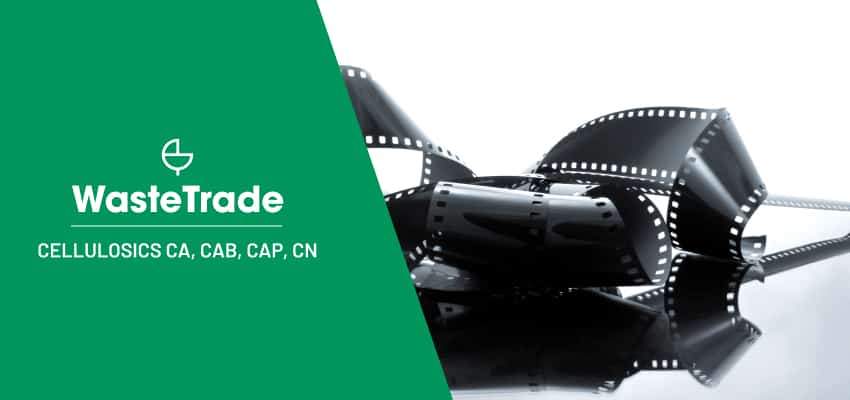Cellulosics CA, CAB, CAP, CN Recycling

Cellulose Plastic Properties

Cellulosics CA, CAB, CAP, and CN are thermoplastic materials that are derived from cellulose. These materials have unique properties and are widely used across various industries. Cellulosics CA, CAB, CAP, and CN are known for their excellent properties such as high transparency, toughness, and durability.
They are also resistant to solvents and oils, making them ideal for use in packaging and industrial applications. These materials are biodegradable, which makes them an environmentally friendly option; they are also non-toxic and non-carcinogenic, which makes them safe for use in food and medical applications.
Cellulosics CA, CAB, CAP, and CN have different properties that make them ideal for specific applications. For instance, Cellulose Acetate (CA) is commonly used in textiles, packaging, and photographic film. Cellulose Acetate Butyrate (CAB) is an excellent material for manufacturing coatings, adhesives, and inks. Cellulose Acetate Propionate (CAP) is used in pharmaceuticals, coatings, and adhesives, and Cellulose Nitrate (CN) is used in the textile industry for making artificial silk.
Cellulose Plastic Applications

Cellulosics CA, CAB, CAP, and CN have numerous applications across different industries. In the packaging industry, Cellulose Acetate (CA) is used in food packaging, and Cellulose Acetate Butyrate (CAB) is used in beverage packaging. In the automotive industry, Cellulose Acetate Butyrate (CAB) is used in coatings for car parts, and Cellulose Acetate Propionate (CAP) is used in coatings for interior parts.
In the cosmetics industry, Cellulose Acetate Butyrate (CAB) is used in nail polish, and Cellulose Acetate Propionate (CAP) is used in lipstick. In the medical industry, Cellulose Acetate Propionate (CAP) is used in surgical dressings and adhesive bandages. In the textile industry, Cellulose Nitrate (CN) is used in artificial silk and Cellulose Acetate (CA) is used in clothing fabrics.
Cellulose Plastic Recyclability
Recycling Cellulosics CA, CAB, CAP, and CN is a sustainable and environmentally friendly option. The biodegradability of these materials is a significant advantage when it comes to recycling. Unlike traditional plastics, which can take hundreds of years to decompose, Cellulosics break down much faster, usually within a few months to a year. During the decomposition process, they do not produce harmful greenhouse gases or toxic waste, making them an eco-friendly option for businesses looking to reduce their carbon footprint.
The recycling process for Cellulosics is easy and straightforward. After collection, the materials are sorted and cleaned to remove any impurities. The Cellulosic waste is then shredded into small pieces and processed into pellets or fibres. These pellets or fibres can then be used in the production of new Cellulosic products. The recycling process for Cellulosics does not require high energy inputs, which means it is energy-efficient and produces fewer greenhouse gas emissions.
Recycling Cellulosics CA, CAB, CAP, and CN can help businesses reduce waste and save resources. Recycling these materials reduces the amount of waste that ends up in landfills and helps preserve natural resources such as oil and gas. Additionally, the recycling process for Cellulosics produces fewer greenhouse gas emissions than the production of new plastics, making it a more environmentally friendly option.
Recycle Cellulose Plastic With WasteTrade
WasteTrade can assist you if you are a business owner seeking to recycle your Cellulosics waste streams. It is a platform that connects businesses with waste management companies that specialise in recycling plastics. Businesses can gain access to information and resources to understand the recycling process and make informed decisions by registering with WasteTrade. To discover the best recycling solutions for your Cellulosics waste streams, register with WasteTrade today.
